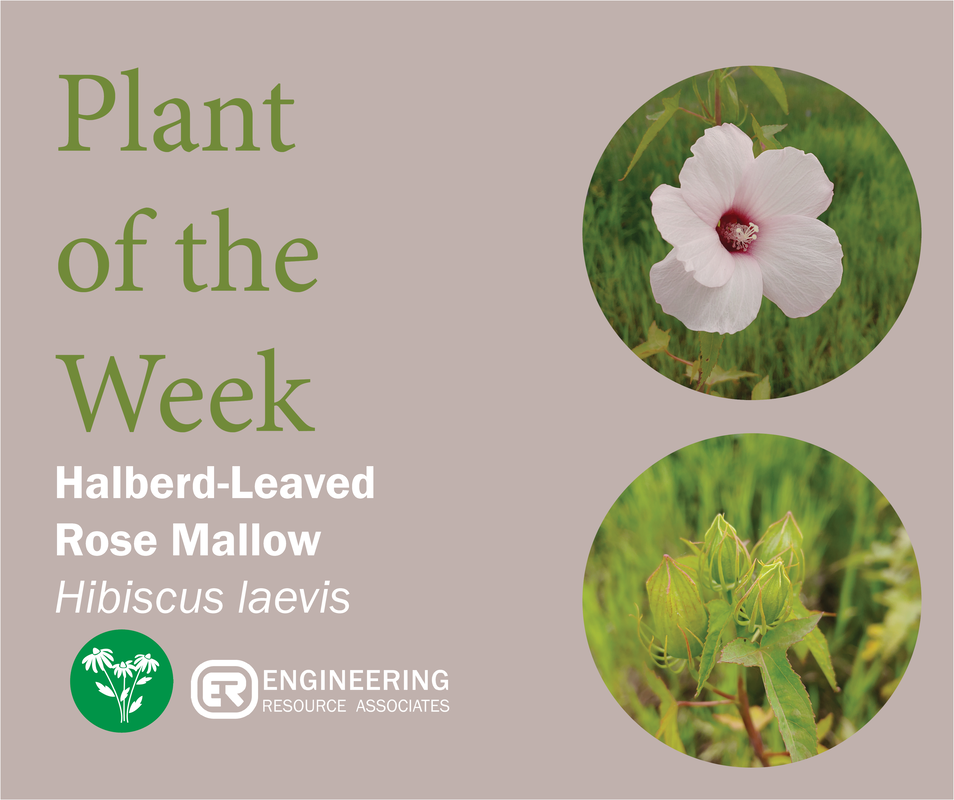The final plant of the week for July is the native Halberd-Leaved Rose Mallow (Hibiscus laevis).
A native wetland perennial found in most areas of the state, this native hibiscus looks like a tropical plant that escaped from the jungles of Hawaii but is content growing in the swamps, riverbanks, and marshes throughout central Illinois and some counties at the north and south ends of the state. This plant can be identified in the off-season by the bunches of upright brown stalks and is difficult to distinguish from the related but rare Swamp Rose Mallow (Hibiscus moscheutos) without foliage present.
While this plant does not lend itself particularly well to landscaping due to its need for wet soils, it can be grown successfully in rain gardens where the ground stays moist year-round. The large flowers are great for pollinators and nectar-seeking insects of all kinds due to their large size and readily accessible pollen-producing organs.
Distinct features of this plant aside from the showy attractive blooms are the interesting lobed foliage and fascinating flower buds protected by a medieval-looking cage of spiky bracts. These bracts seem to act as a defense against herbivores, though they are not very effective as they are soft and flexible.
A native wetland perennial found in most areas of the state, this native hibiscus looks like a tropical plant that escaped from the jungles of Hawaii but is content growing in the swamps, riverbanks, and marshes throughout central Illinois and some counties at the north and south ends of the state. This plant can be identified in the off-season by the bunches of upright brown stalks and is difficult to distinguish from the related but rare Swamp Rose Mallow (Hibiscus moscheutos) without foliage present.
While this plant does not lend itself particularly well to landscaping due to its need for wet soils, it can be grown successfully in rain gardens where the ground stays moist year-round. The large flowers are great for pollinators and nectar-seeking insects of all kinds due to their large size and readily accessible pollen-producing organs.
Distinct features of this plant aside from the showy attractive blooms are the interesting lobed foliage and fascinating flower buds protected by a medieval-looking cage of spiky bracts. These bracts seem to act as a defense against herbivores, though they are not very effective as they are soft and flexible.

